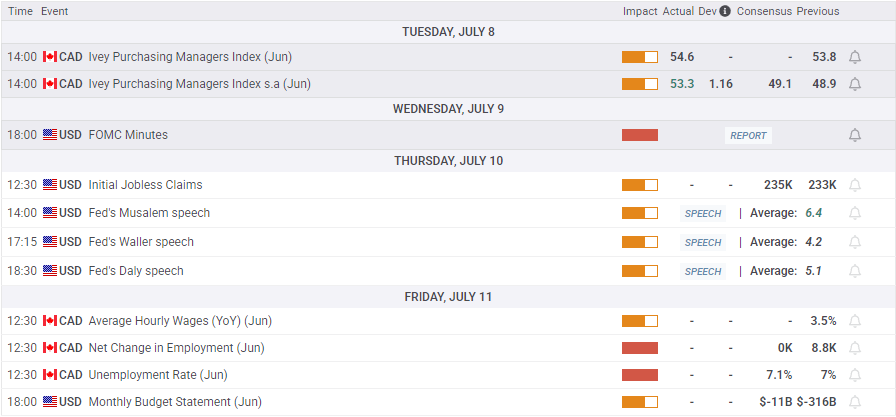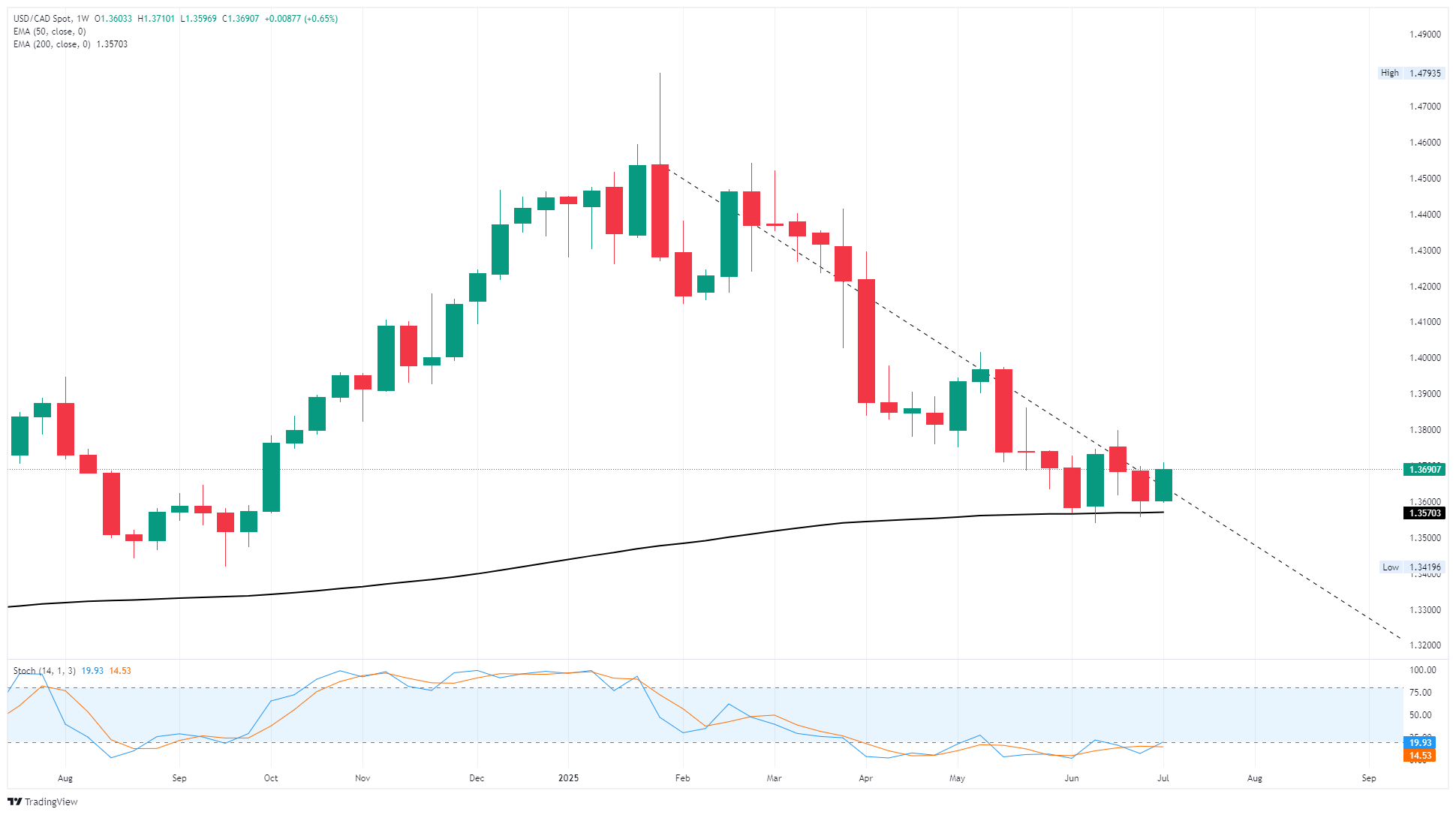Canadian Dollar backslides further as risk aversion bolsters the Greenback further
- The Canadian Dollar fell to fresh two-week lows against the US Dollar on Wednesday.
- Market sentiment is getting battered by renewed tariff threats from the Trump administration.
- Despite the fresh cycle of Trump tariff bluster, markets are still leaning into expectations of another walkback.
The Canadian Dollar (CAD) shed further weight on Wednesday, falling to its lowest bids against the US Dollar (USD) in around two weeks, pushing the USD/CAD pair back up into the 1.3700 region. Market sentiment is drawing into the middle as the Trump administration recycles its threats about additional tariffs on countries that have been treating the US “unfairly” on trade. However, President Trump has a well-established track record of threatening far steeper import taxes than he tends to deliver, leaving plenty of room for investors to bank on another walkback.
Canadian Ivey Purchasing Managers Index (PMI) figures improved in June, bouncing back above the 50.0 contraction level following a two-month decline in aggregated business expectations. The Canadian economy is still on rocky footing overall, and CAD traders will be looking ahead to this week’s Canadian net hiring figures due on Friday.
Daily digest market movers: Light risk aversion on tariff talk squeezes Loonie lower
- The Trump administration has unveiled another raft of countries that will be facing additional double-digit tariff levels on August 1 if trade deals aren’t delivered to President Trump’s desk before then.
- This is in addition to double-digit reciprocal tariffs that are also due to come into effect on August 1 after being delayed 90 days in April and then another month just before the July 9 deadline.
- Ongoing tariff tensions with an inconsistent outlook have hung both investors and business operators out to dry as on-again, off-again tariffs make trade conditions forecasting functionally impossible.
- Elsewhere in markets, the Federal Reserve’s (Fed) latest Meeting Minutes showed Fed policymakers were leaning toward lower inflation expectation at the Federal Open Market Committee’s (FOMC) last rate call meeting, however that view was contingent on no further tariff volatility from the Trump administration.
- Coming up later this week, the Canadian economy is expected to add no new jobs through June, while the Canadian Unemployment Rate is expected to tick up to 7.1%.

Canadian Dollar price forecast
Ongoing CAD weakness, or USD strength, is poised to push the Loonie into a fresh bout of new lows. USD/CAD is testing waters just above ongoing downward trendlines from multi-decade peaks set earlier in 2025, and counter-trend flows could roll over into a full-blown reversal if USD bulls continue to push up the Greenback against the weakening CAD.
USD/CAD daily chart

Canadian Dollar FAQs
The key factors driving the Canadian Dollar (CAD) are the level of interest rates set by the Bank of Canada (BoC), the price of Oil, Canada’s largest export, the health of its economy, inflation and the Trade Balance, which is the difference between the value of Canada’s exports versus its imports. Other factors include market sentiment – whether investors are taking on more risky assets (risk-on) or seeking safe-havens (risk-off) – with risk-on being CAD-positive. As its largest trading partner, the health of the US economy is also a key factor influencing the Canadian Dollar.
The Bank of Canada (BoC) has a significant influence on the Canadian Dollar by setting the level of interest rates that banks can lend to one another. This influences the level of interest rates for everyone. The main goal of the BoC is to maintain inflation at 1-3% by adjusting interest rates up or down. Relatively higher interest rates tend to be positive for the CAD. The Bank of Canada can also use quantitative easing and tightening to influence credit conditions, with the former CAD-negative and the latter CAD-positive.
The price of Oil is a key factor impacting the value of the Canadian Dollar. Petroleum is Canada’s biggest export, so Oil price tends to have an immediate impact on the CAD value. Generally, if Oil price rises CAD also goes up, as aggregate demand for the currency increases. The opposite is the case if the price of Oil falls. Higher Oil prices also tend to result in a greater likelihood of a positive Trade Balance, which is also supportive of the CAD.
While inflation had always traditionally been thought of as a negative factor for a currency since it lowers the value of money, the opposite has actually been the case in modern times with the relaxation of cross-border capital controls. Higher inflation tends to lead central banks to put up interest rates which attracts more capital inflows from global investors seeking a lucrative place to keep their money. This increases demand for the local currency, which in Canada’s case is the Canadian Dollar.
Macroeconomic data releases gauge the health of the economy and can have an impact on the Canadian Dollar. Indicators such as GDP, Manufacturing and Services PMIs, employment, and consumer sentiment surveys can all influence the direction of the CAD. A strong economy is good for the Canadian Dollar. Not only does it attract more foreign investment but it may encourage the Bank of Canada to put up interest rates, leading to a stronger currency. If economic data is weak, however, the CAD is likely to fall.
